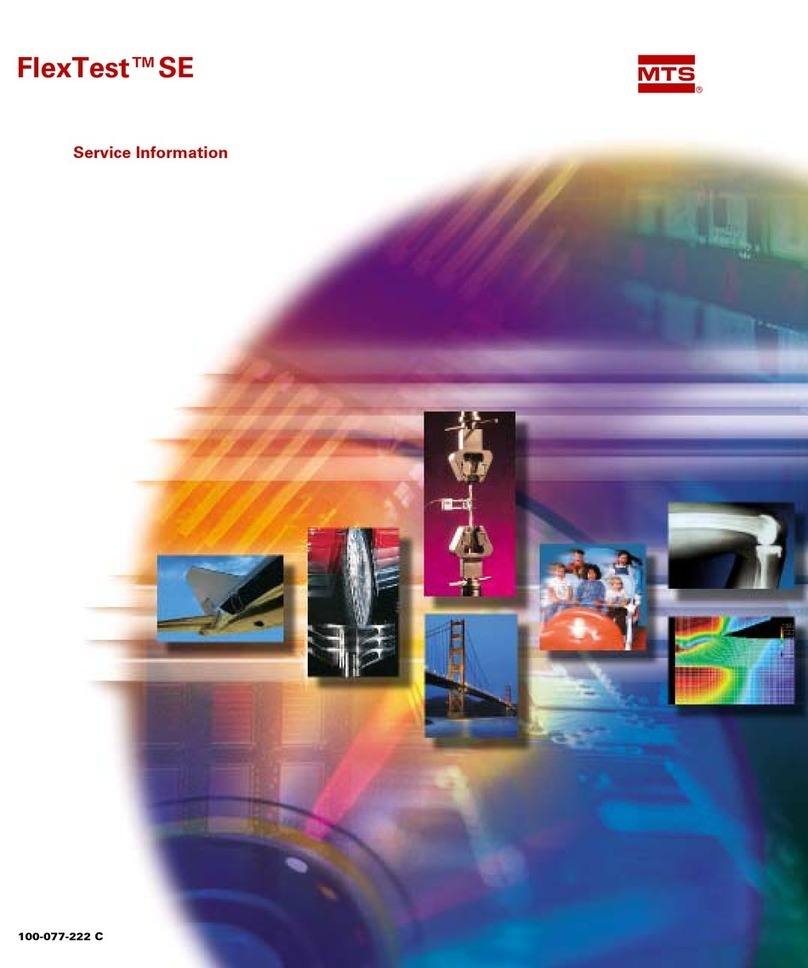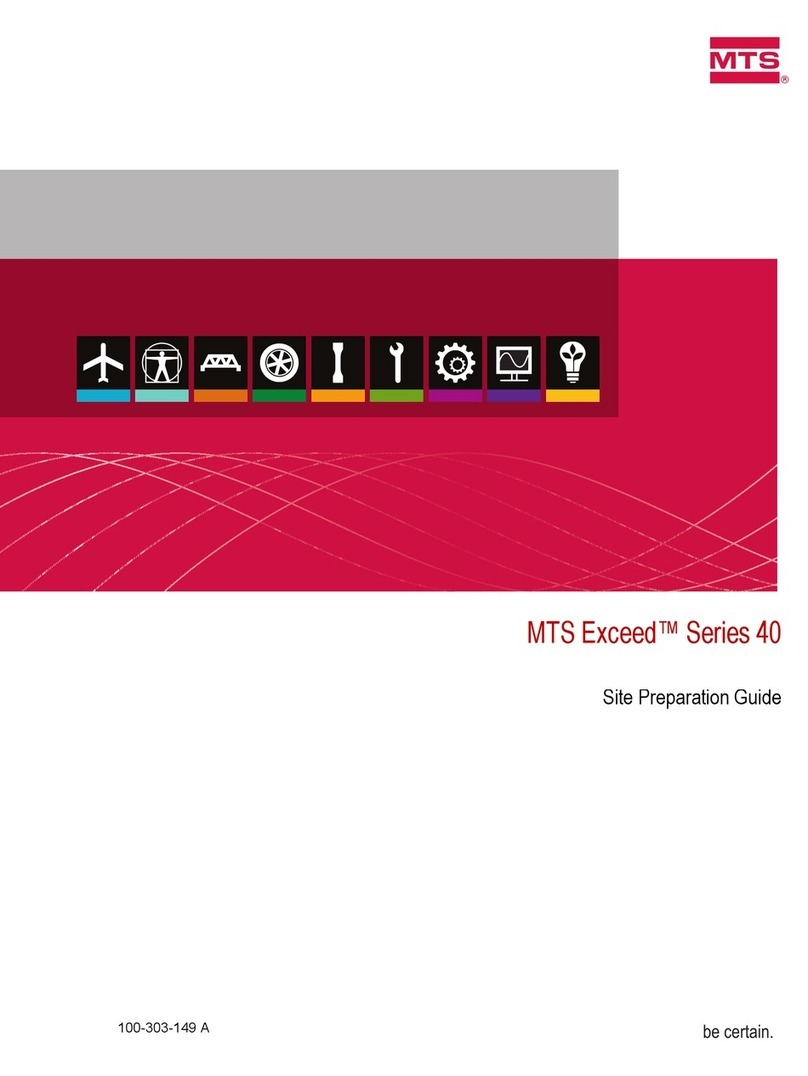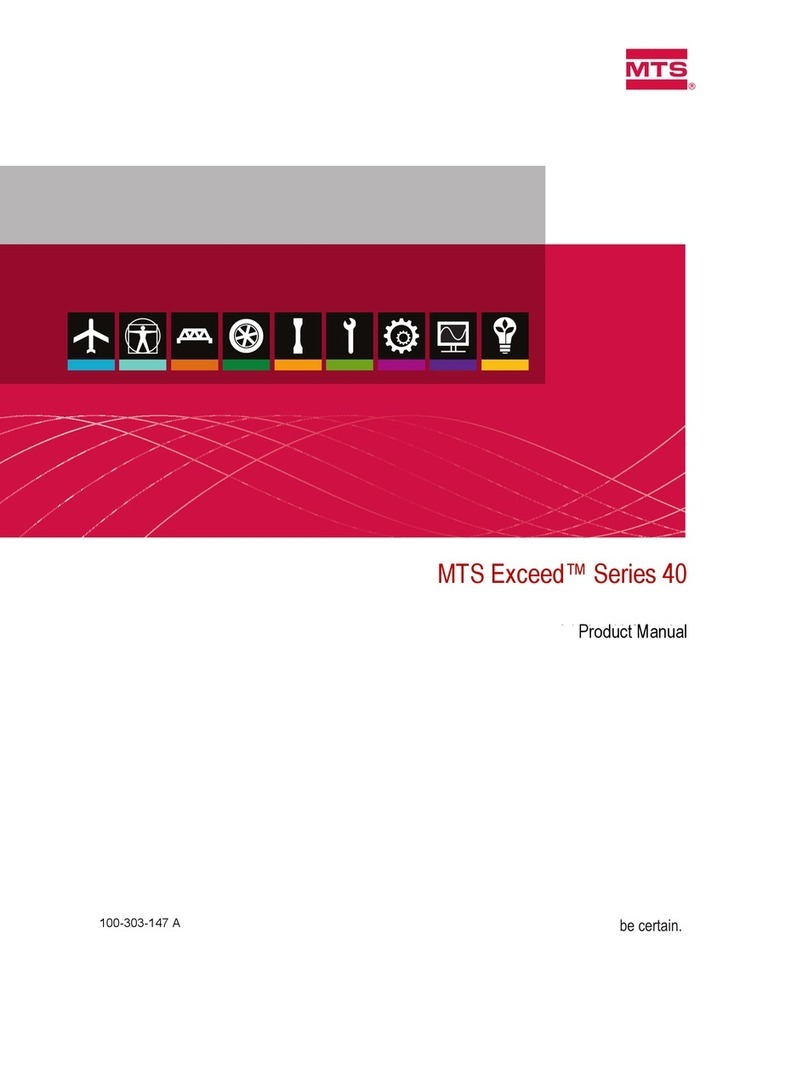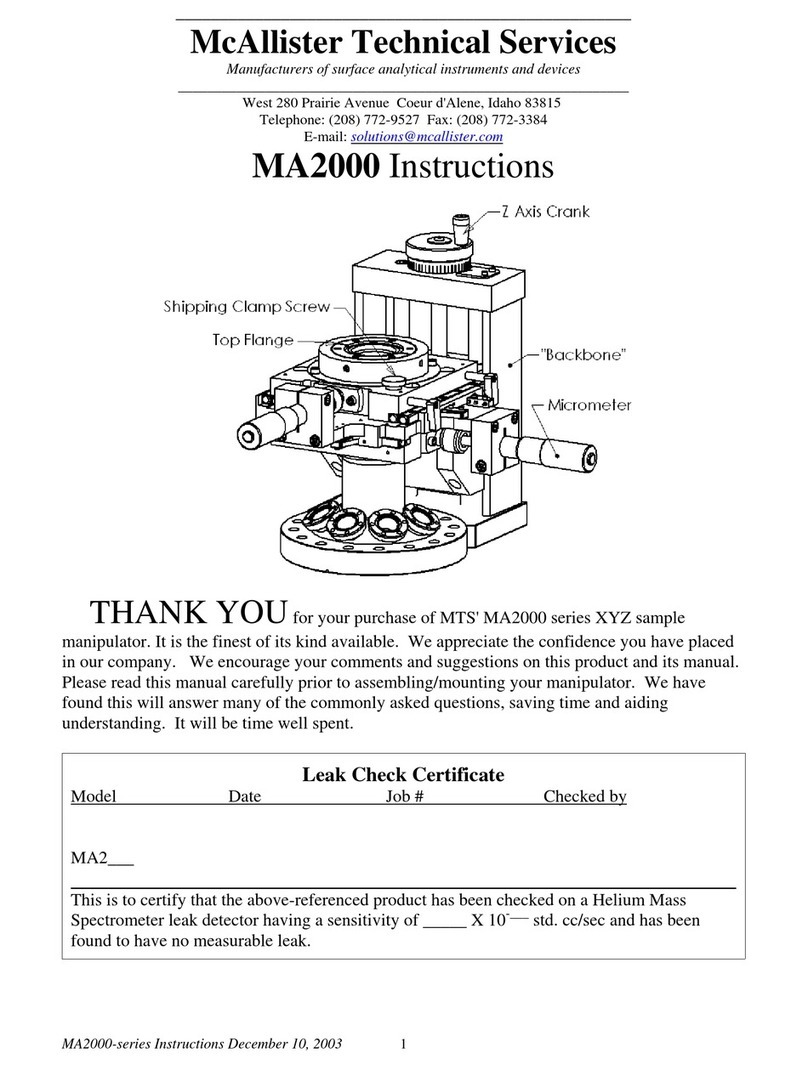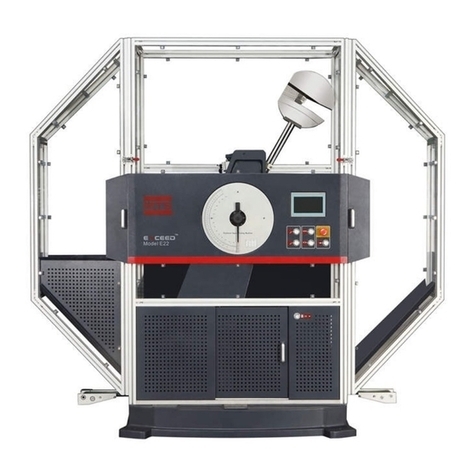
MTS Exceed™ 22 Series Product Information
10
Safety Practices Before Operating the System
Safety
It is important for you to read the following safety information, to assure that
your operations and system working environment will not contribute to or cause
hazards. Keep in mind that you cannot eliminate all hazards of the system, so you
should understand and remember all applicable hazards at all times. These safety
guidelines can help you understand and identify hazards such that you can
develop appropriate training and operating procedures and acquire proper safety
gears (such as gloves, goggles, and hearing protections, etc.).
Each test system is run in a particular operating environment, which includes the
following known variables:
•factors of the site (such as architectural structure, environment, and its
functions);
•the customer's unauthorized modification of equipment;
•experience and professionalism of operators;
•test specimen.
Because of the above variables and other possible factors, your system may work
under unforeseen circumstances that might contain unknown hazards. Incorrect
system installation, operation, or maintenance may lead to death, personal
injuries or equipment/specimen damages. Common sense and thorough
knowledge of the system's performances may help you develop proper and safe
operating methods.
Safety Practices Before Operating the System
Check all safety practices applicable to the system before powering on the
system. The purpose of this is to improve the safety awareness of all personnel
relating to the system and observe and maintain the integrity of specific system
components through naked eye.
Reading All
Manuals
Prior to your first attempt to perform any system operations, you should read this
Manual and all other manuals companying the system. This will help you get a
general idea of the system, so as to avoid possible hazards.
Finding and
Reading
Danger Labels/
Signs
Find and read danger labels posted on the equipment and follow their
instructions. These labels are posted at corresponding danger areas to draw
attention (such as easily crush zones, electrical danger zones, etc.).
Locating Close/
Switch Points
You should learn about the close/switch positions corresponding to each energy
source of the system, including hydraulic, gas, electricity, and water sources, to
make sure these energy sources can be isolated from the system when necessary.
Knowing Plant's
Safety Processes
Most facilities have their own internal procedures and regulations as safety
practices. You should learn about these safety practices and apply them in daily
system operations.
Learning Controls When operating the system for the first time, you should run the system according
to operating procedures without powering the system on. Check all hardware and
software controls, and understand their functions and what adjustments should be
made. If you feel fuzzy about any control functions or adjustment methods, please
consult relevant information until you have a pretty clear mind.

